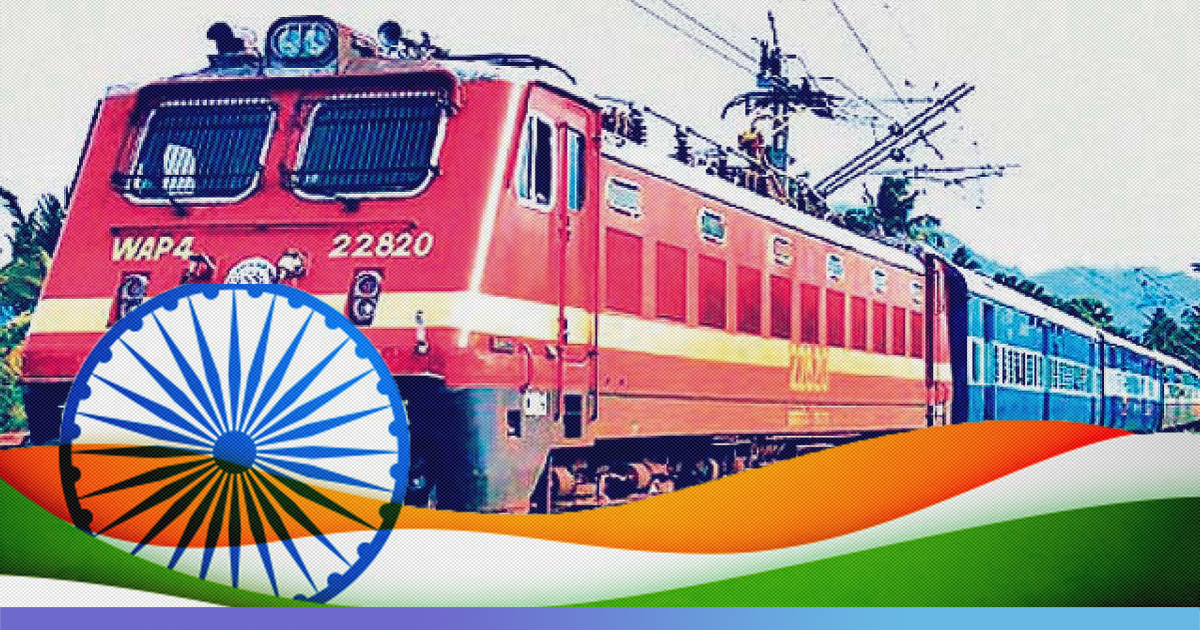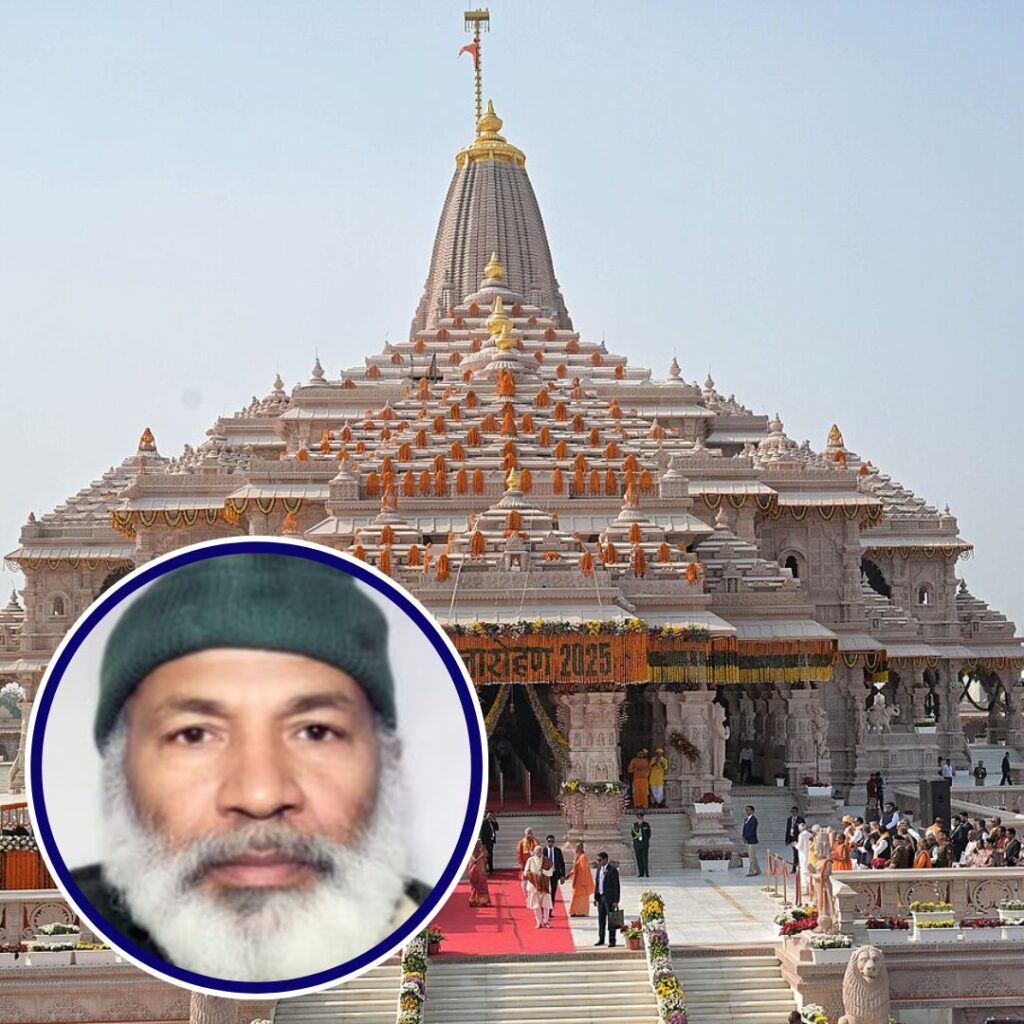As India marks 73rd Independence Day, The Logical Indian brings you the journey of the Indian Republic from the clutches of the British rule to becoming one of the fastest-growing economies in the world. Over the next few days, we will focus on key parameters, sectors and issues that are crucial to the Union Of India.
The railway is one of the most preferred media of public transport in India. Established in 1845, the Indian Railways (IR) is one of the oldest and largest rail networks in the world. With the total length of 1,21,407 kilometres, the IR carries over 8 billion passengers and over 1.1 billion of cargo every year.
The first train ran in India in 1837 in Madras. It was powered by a steam locomotive and travelled from Red Hills to Chintadripet. Within 20 years all the major metropolitan centres – Delhi, Bombay, Calcutta and Madras – were linked by an extensive railway network. The country’s hill railways were laid in the next 50 years. Less than a century after the railways entered into India, as many as 54,000 kilometres of tracks were added to the country’s network at the annual rate of 600 km.
1845-1925: Towards centralisation
After years of construction and financial investments, the railways finally began to incur profits in 1901. It was during this period the government’s intervention increased dramatically.
GIPR (Great Indian Peninsula Railway) was the first company to become state-owned in 1845. First passenger train ran from Bori Bundar in Bombay to Thane in 1853. By the end of the 19th century, the government had purchased all significant lines and started leasing them to private operators.
The Railway Board was established in 1901, including a government official, an English railway manager and an agent of one of the company railways.
In 1905, powers were formalised by the government. Efforts were made towards a centralised management system, with both GIPR and East Indian Railways (EIR) being nationalised in 1923.
Later, World War I took its toll on the development of Indian rail with production diverted to meet British requirements outside of India. Towards the end of the war, the Indian Railways was in a state of disrepair, with several services suspended. Railway finances were separated from the general budget in 1924, with the railway receiving its first individual dividend in 1925.
The first electric train ran between Bombay and Kurla on 3 February 1925, setting an example for further electrification in future.
Ups And Downs
The economic depression kick-started by the Wall Street Crash, which had an impact on the Indian Railways. Meanwhile, World War II also hindered railway development, as wagons were extensively commandeered for military movements.
In 1947, the departure of Britain bifurcated the nation in two, losing more than 40 per cent of the network to the newly created Pakistan.
Two major lines, the Bengal Assam and North Western Railway, were divided and isolated from the Indian rail system. In the post-partition furore, violent mobs damaged railway infrastructure and attacked trains carrying refugees.
The early 1960s witnessed the network getting equipped with modern locomotives, fast trains, new world-class rolling stock and good service. Electrification was at its peak, and there was a rapid decline in the production of steam engines, as electric and diesel were entering the industry.
But the good days were short-lived. The aftermath of the Indo-China war (1962) squeezed the Railways out of its ambitious expansion and modernisation plans. Several long-distance Air-Conditioned trains and “Super Expresses” were introduced along with several classes and accommodations.
This led to the introduction of the first Rajdhani Express which ran on March 3, 1969, between Howrah and New Delhi. By this time, around 3500 route kilometres had been electrified.
This decade was also the one where the Indian Railways added the newest tracks since independence, with around 3500 km of new track being laid.
The 1970s- Best Period Before 2000
The railways witnessed a stagnation as the economy slowed down, and the technological advancement could not be maintained at the same pace.
However, one major body was set up, the Central Organisation for Railway Electrification (CORE) which focused on electrifying all feasible routes in India.
The steam production shut with the last steam engine rolling out of Chittaranjan Locomotive Works (CLW) in 1975.
They tried to bring about “equality among classes” by making classless trains like the New Delhi – Ernakulam/Mangalore Jayanti Janata Express, Gitanjali Express, Himgiri Express etc., all of which were unsuccessful.
Towards the end of the 1970s, train structures were overhauled with colonial-era coaches being rapidly replaced by the new “Integral” ones.
Madhu Dandavate, the then Railway Minister, was the brainchild behind much of these reforms and is still considered the real “moderniser” of the Indian Railways. His greatest achievement is the “two inches of foam” he put on the wooden berths and seats of the Second Class.
In 1976, the first train between India and Pakistan, the Samihauta Express, began running between Amritsar and Lahore.
1980 – 1989
Around 4500 route kilometres of the railway track was electrified between 1980 and 1990. In the same period, the Indian Railways also introduced the most complicated and biggest real-time database systems in the World: The Indian Railways Online Passenger Reservation System.
It began as a standalone computer reservation system in 1985 for some trains at Delhi, then at Madras, Bombay, Calcutta and Secunderabad.
The pathbreaking WAP-1 (1980) and WAG-5 (1988) locomotives were introduced in this decade, and the first Shatabdi started between New Delhi and Jhansi and was later extended to Bhopal.
The 1990s Period
The railways got a boost of modernisation in this period. In 1994 Sleeper and AC 3-tier were introduced in trains, tracks were laid in the hilly terrains of Konkan, and the reservation system across India was computerised.
Electrification continued unabated with 2500 km electrified per year; high-powered locomotives were introduced.
The early 1990s, the Railway Budget started to be used as a political tool for handing out promises and plans for the overall, long-term development of the Railways. Many new trains and new railway lines were started to gain votes.
2000-2012
The entry of the agent system for the reservation made ticketing easier and a hassle-free business. One could approach any of the thousands of ticket agents. Within a few minutes, passengers would get their tickets, that too without standing in queues for hours.
Most of the Indian Railways’ Meter and Narrow Gauge routes were converted to Broad Gauge, and most of the Railway’s trunk routes were electrified.
Railway patronage has witnessed an all-time high with hundreds of special trains being run annually, and rarely a train not running waitlisted. The railways continue to make efforts for all passengers to get a confirmed seat, but with the increase in demand each day, it never happens.
2017: Moving Online
Since 2000, metro stations have continued to pop up in India’s major cities, including Delhi (2002), Bangalore (2011), Gurgaon (2013) and Mumbai (2014). The country also witnessed the creation of the network’s East Coast, South Western, South East Central, North Central and West Central Railway zones, in 2002.
More recently, the Gatimaan Express, India’s fastest train with a top speed of 160km/h, made its maiden journey from Delhi to Agra on 5 April 2016.
Additionally, Indian Railways announced on 31 March 2017 that the country’s entire rail network would be electrified by 2022.
Today, Indian Railways has the fourth-largest rail network in the world, with tracks spanning more than 120,000km of the country.
2019: Touching New Highs
The railway is preparing for the future with many initiatives. Current Rail Minister Piyush Goyal said on May 2018 that free WiFi services would be provided at more than 7,000 stations by 2019, and Indian Railways has invested in greener technologies to meet 25 per cent of its power demand with renewables, primarily solar, by 2025.
The Indian Railways manufactured a high-speed locomotive that has the ability to run at a speed of 180 km per hour. The high-speed engine was developed in West Bengal’s Chittaranjan Locomotive Works (CLW), under the ‘Make in India’ initiative of the Modi-led government.
Railways has manufactured a high speed locomotive in West Bengal’s Chittaranjan Locomotive Works, achieving a top speed of 180km/hr.
This new locomotive produced under ‘Make In India’ initiative, will speed up trains like never before.
Watch the video: pic.twitter.com/E5QCi0dSa7
— Piyush Goyal (@PiyushGoyal) August 12, 2019
Vande Bharat Express, India’s fastest train, had hit a speed of 180 km per hour during its trial run. Integral Coach Factory, Chennai manufactured the train.
‘Mission Rafatar’
Effective 1 July, Indian Railways has speeded up 261 trains by up to 110 minutes, as part of its ‘Mission Raftaar’ to provide quicker commute travel to passengers.
‘Mission Raftaar’ was announced in the Railway Budget 2016-17. It aims at a target of doubling the average speed of goods trains and increasing the average rate of all non-suburban passenger trains by 25 km/h in the coming five years.
This Independence Day, celebrating 166 years of the introduction of first passenger trains in the country, the Indian Railways is the world’s largest rail employers and has come a long way from the British Raj to the modern rail operations.
The article is a part of our series on 73rd Independence Day in our endeavour to pay homage to all those who lost their lives fighting for the freedom that we enjoy today.











